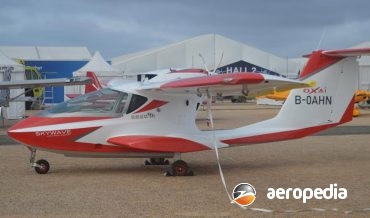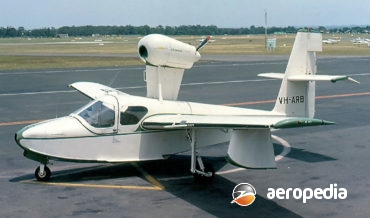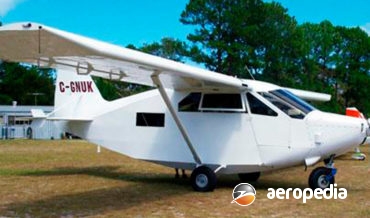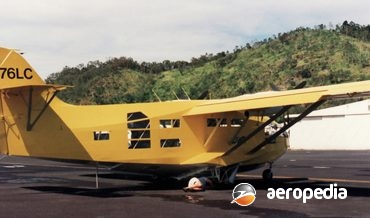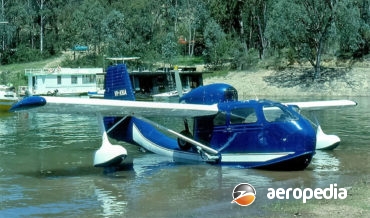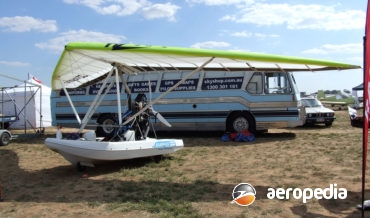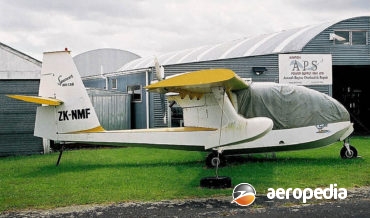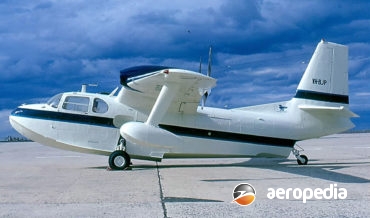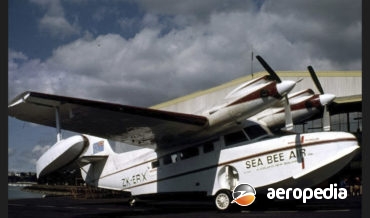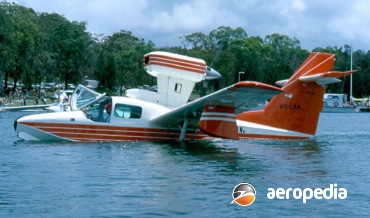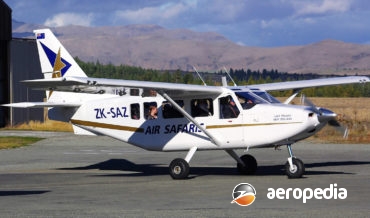All Contents
Contents
The M-2 Skywave is one of a new series of carbon fibre two-seat light sport aircraft introduced to the market in the 21st Century and is similar in appearance to the Icon M-5 from the United States and the Vickers Wave produced at New Plymouth in New Zealand.
David C. Eyre
- March 23, 2020
The SeaBear was designed by G Annenkov and a team of graduates from the Samara State Aerospace University in Russia and more than 30 examples have been delivered.
David C. Eyre
- March 23, 2020
Photograph: Supermarine Seagull III A9-6 on Sydney Harbour c 1938 (RAAF Museum) Country of origin: United Kingdom Description: Amphibious reconnaissance biplane Power Plant: One 336 kw (450 hp) Napier Lion twelve-cylinder, broad-arrow, liquid-cooled engine Specifications: Wingspan: 14.0 m (46 ft) Length: 11.27 m (37 ft) Height: 3.65 m (12 ft)
David C. Eyre
- May 19, 2019
The skimmer was a successful foray into the production of an amphibian for private use by the Colonial Aircraft Corp.
David C. Eyre
- May 17, 2019
Colyaer SL has been building light sport aircraft for some years, the first aircraft produced being the Martin, which was fully certified and was a two-seater with a fixed tricycle undercarriage, this model becoming available in 1999 and in its later form was known as the Martin 3.
David C. Eyre
- May 17, 2019
The Wilson Explorer II, also known as the Private Explorer II, was designed by Dean Wilson and was a development of the twin-engine Global Explorer which was designed and built for French explorer Hubert de Chevigny.
David C. Eyre
- May 8, 2019
he Global Explorer I (N376LT) was designed by prolific aircraft designer Dean W Wilson and built to meet the requirements of explorers Hubert de Chevigny and Nicolas Hulot, the first machine flying for the first time in April 1991.
David C. Eyre
- May 8, 2019
The Widgeon II was a re-design of the Widgeon I, being described as benefiting from the experience gained in the construction and operation of the earlier aeroplane.
David C. Eyre
- May 8, 2019
In 1941 the S-12 Amphibian Air Car was built in the United States by Percival H Spencer, he having formed Spencer-Larson Aircraft Corp to build a light amphibian.
David C. Eyre
- May 8, 2019
The Ramphos is a trike developed in 1998 to operate for the enjoyment of tourists requiring sightseeing flights over local beaches in Italy and which would be economical and easy to operate as a flying boat.
David C. Eyre
- May 8, 2019
The Spencer Air Car, also known as the Amphibian Air Car, was designed by Mr P H Spencer as a four-seat amphibian bearing a strong resemblance to the Republic Seabee, which he also designed.
David C. Eyre
- May 8, 2019
Designed by Igor Ivanovich Sikorsky, the renowned former Russian aircraft engineer, The S-38 was a development of the S-36, which was Sikorsky’s first amphibian, and which seated eleven.
David C. Eyre
- May 8, 2019
In the 1980s Polaris Motor, an Italian company, commenced designing and producing a small flying-boat which was basically a trike with an amphibious hull.
David C. Eyre
- May 8, 2019
The Piaggio P-136 series of amphibious flying-boats was a produced in Italy during the late 1940s and early 1950s.
David C. Eyre
- May 8, 2019
The history of the Grumman Goose is dealt with elsewhere and need not be dealt with in any detail here.
David C. Eyre
- May 8, 2019
The Renegade is a six-seat development of the Buccaneer, a type which has proved very popular in this region, with more than 40 examples registered over the years.
David C. Eyre
- May 8, 2019
Following its success in the market, Gipps Aero continued the development of the Airvan and produced a number of enhancements to the aircraft, these including an optional under-fuselage cargo pod, an autopilot, air-conditioning, a larger nosewheel for soft field operations and an EDM-800 engine monitoring and data logging system.
David C. Eyre
- May 8, 2019
The Sea Hawk was designed by Garry LeGare in Canada, it being an all-composite amphibious biplane which, depending on the power plant installed, can seat two adults, up to three adults, or two adults and two children.
David C. Eyre
- May 8, 2019
Recent Comments
Archives
Categories
- No categories
Categories
- No categories
Latest Posts
Newsletter

